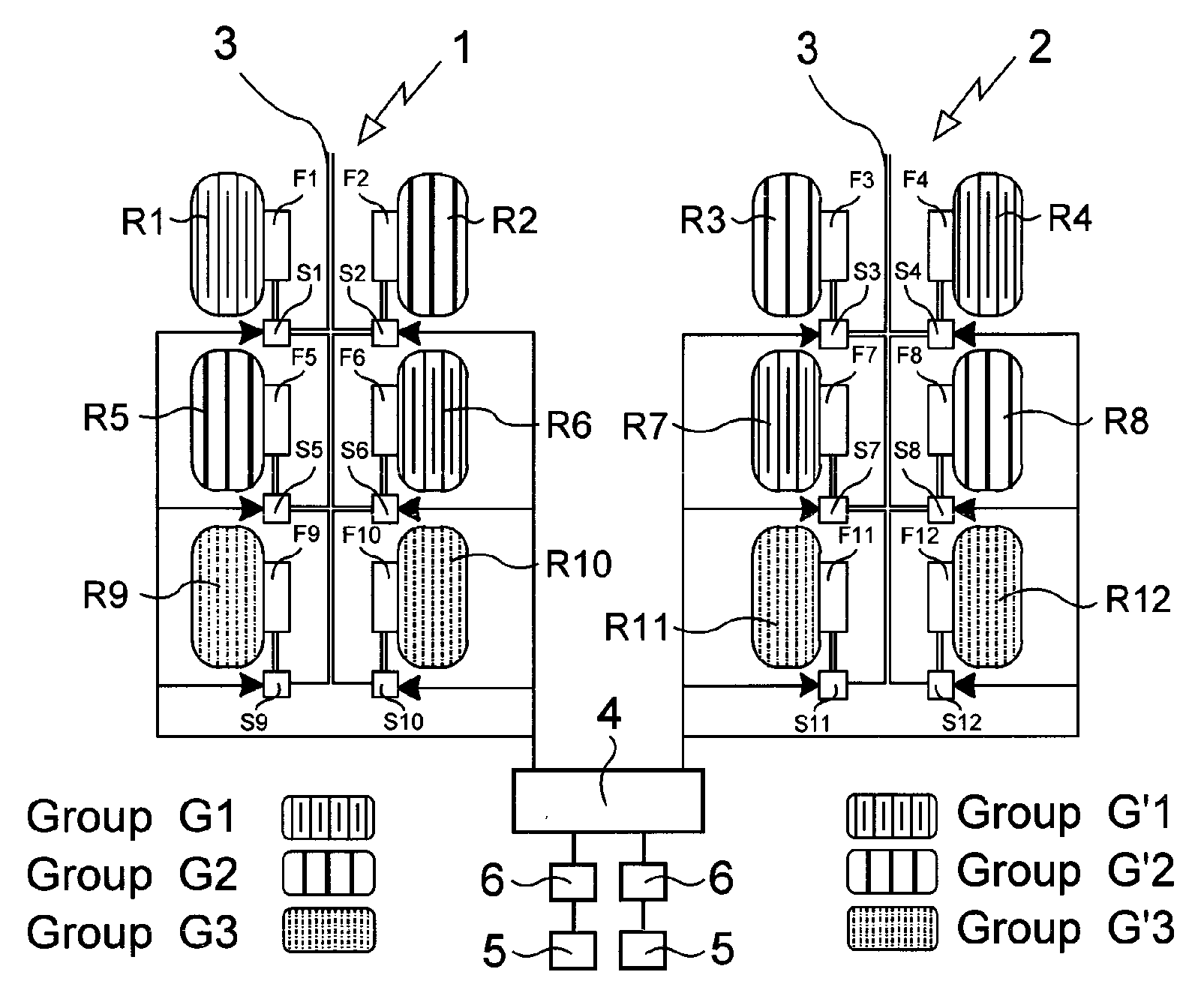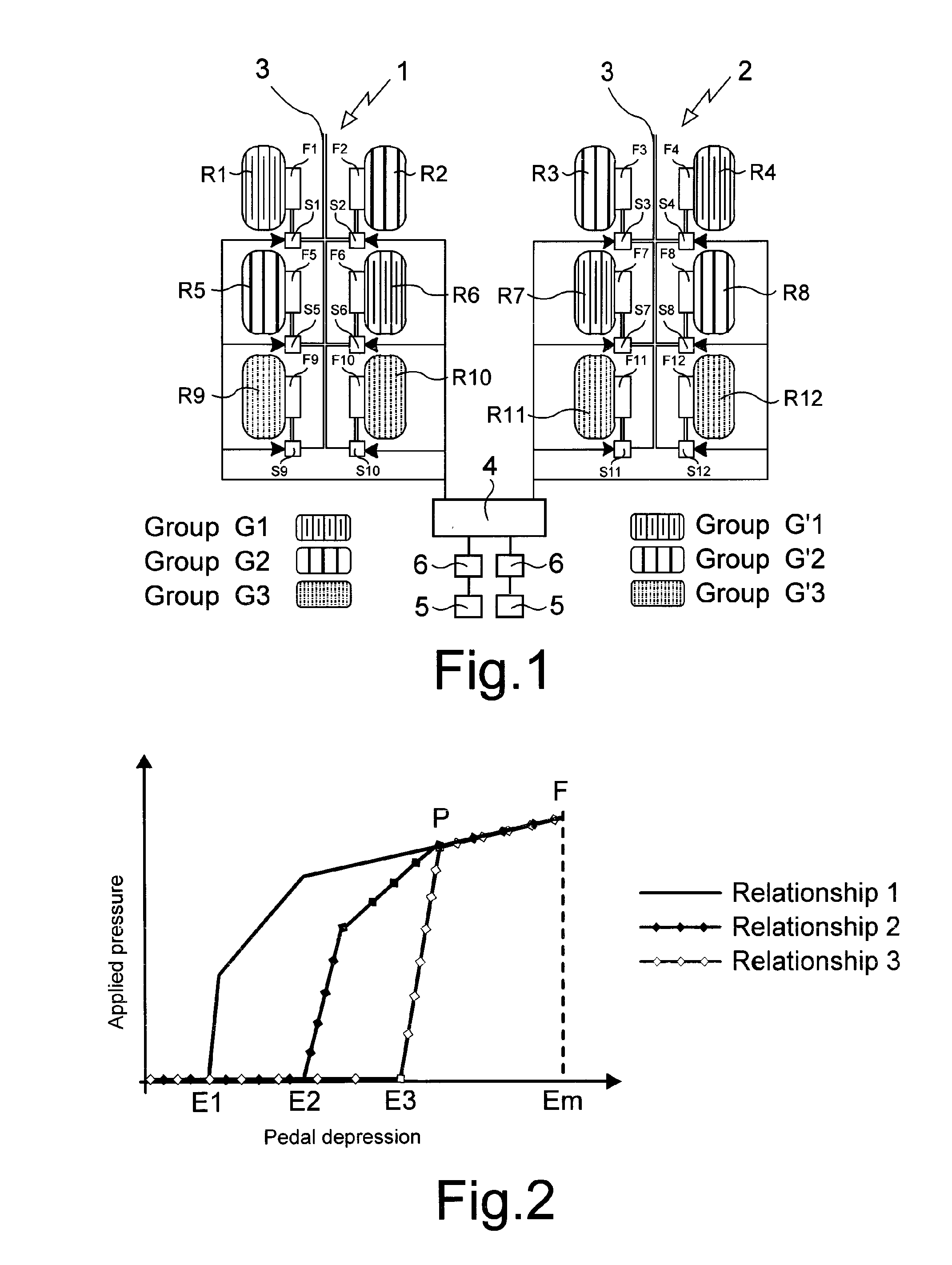Method of managing the braking of an aircraft
a technology of managing braking and aircraft, applied in the direction of aircraft braking arrangement, instruments, navigation instruments, etc., can solve the problems of not being able to reduce the temperature or wear difference, and the effectiveness of braking that results from the remaining brakes is quite clearly diminished, so as to achieve a small stress, limit the stress, and maintain satisfactory braking effect
- Summary
- Abstract
- Description
- Claims
- Application Information
AI Technical Summary
Benefits of technology
Problems solved by technology
Method used
Image
Examples
Embodiment Construction
[0015]With reference to FIG. 1, the braking management method of the invention in this implementation is used in an aircraft having twelve-wheel landing gear, the wheels being carried by two main undercarriages 1, 2. The wheels of the first main undercarriage 1 are referenced R1, R2, R5, R6, R9, and R10, and the wheels of the second main undercarriage 2 are referenced R3, R4, R7, R8, R11, and R12.
[0016]Each wheel R1, . . . , R12 is fitted with a respective electro-hydraulic brake F1, . . . , F12 that is actuated by an associated hydraulic servovalve S1, . . . , S12. Each servovalve is fed with fluid by a hydraulic circuit 3 and is electrically controlled by control means 4. The servovalves are controlled as a function of the extent to which brake pedals 5 are depressed (there being two of them in this example). To do this, each brake pedal 5 is associated with a depression sensor 6 that transforms the angle of inclination of the pedal 5, i.e. the extent to which it is depressed, int...
PUM
 Login to View More
Login to View More Abstract
Description
Claims
Application Information
 Login to View More
Login to View More - R&D
- Intellectual Property
- Life Sciences
- Materials
- Tech Scout
- Unparalleled Data Quality
- Higher Quality Content
- 60% Fewer Hallucinations
Browse by: Latest US Patents, China's latest patents, Technical Efficacy Thesaurus, Application Domain, Technology Topic, Popular Technical Reports.
© 2025 PatSnap. All rights reserved.Legal|Privacy policy|Modern Slavery Act Transparency Statement|Sitemap|About US| Contact US: help@patsnap.com


